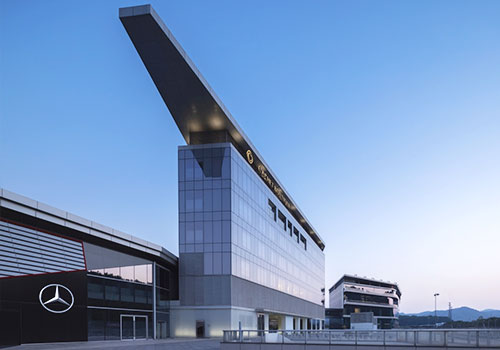2022 | Professional

The Holocaust Galleries
Entrant Company
Casson Mann
Category
Interior Design - Exhibits, Pavilions & Exhibitions
Client's Name
Imperial War Museum London
Country / Region
United Kingdom
The Holocaust Galleries set a new precedent for presentations of the subject. Replacing the museum’s previous Holocaust exhibition, these permanent galleries present expanded material and updated scholarship. They had to be relevant, engage visitors and communicate key messages: the Holocaust was indivisibly linked to WW2; the Holocaust was not inevitable, but followed a chaotic, changing path; the Holocaust involved real people, as victims and perpetrators.
Our design concept brings evidence ‘into the light’. We departed from the shadowy, theatrical museum ‘Holocaust aesthetic’, in favour of light-filled legibility. Galleries suffused with colour reflect how crimes were committed in ‘plain sight’. Sky blue walls and everyday sounds evoke daylight and familiarity. Affirming recent academic thinking, they dispute the myth that horrors were perpetrated under a ‘cloak of darkness’.
The design challenges the anonymity of the Holocaust. Victims and perpetrators appear at eye level in life-sized photos—like those Jewish individuals whose vibrant pre-war photos fill the first gallery. Visitors come to understand the Holocaust not as the murder of 6 million people, but as 6 million individual murders.
Casson Mann used the physical challenges of the space to support the conceptual message. Housed in previous ‘back of house’ areas, the galleries are full of twists, turns and dead ends. Our design used this labyrinthine quality to convey that this atrocity was not inevitable, but dirty and gradual.
Graphics are informed by the aesthetic of WW2-era filing documents, referencing the real people involved in wartime developments: quotes from perpetrators use the font of the actual typewriter on which were written Nazi deportation orders of Dutch Jews. We worked with sound designers to ‘tune’ each space—the gallery examining the death camps is acoustically mute, so the silence itself draws attention.
Casson Mann briefed the museum’s team to film massacre sites, documenting these as real places. This contemporary footage of serene landscapes and acoustic soundscapes contrast starkly with graphic text explaining these horrors. The contemplative display challenges the misconception that Nazis only committed mass killings in the camps: instead, the 'Holocaust by bullets' saw victims massacred on streets, on beaches, and in woods.
Credits

Entrant Company
Apex Circuit Design Ltd., Ridge and Partners LLP, Huahui Group
Category
Architectural Design - Sports & Recreation


Entrant Company
Beijing Shanhe Jinyuan Art and Design Stock Co., Ltd.
Category
Interior Design - Commercial


Entrant Company
Clare Lynch Creative
Category
Packaging Design - Dairy, Spices, Oils Sauces & Condiments


Entrant Company
MEZ Atelier
Category
Fashion Design - Handmade










